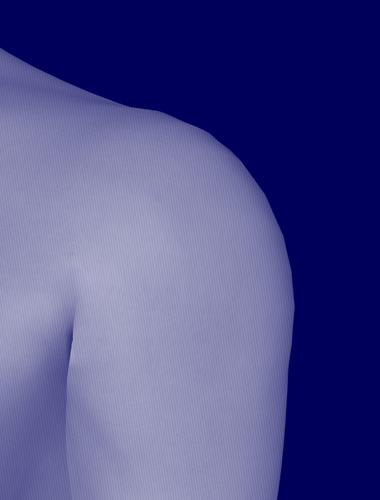"Smooth Polygons" in DS?
 Taoz
Posts: 9,973
Taoz
Posts: 9,973
Poser has an option called "Smooth Polygons" under render settings that will smoothen out edges on e.g. shoulders, like those on the picture here. Is there a similar option or something else that can do the trick in DS?
--


smpoly.jpg
549 x 723 - 227K


Comments
If using a object or figure that supports sub-D (e.g Genesis) then you can crank up the iterations under the parameters tab, you can also try playing with the smoothing angle slider under the surfaces tab for what its worth, although it wont effect the jagged appearance of the edges of your figure or object, (like in your above picture)
But AFAIK there is nothing specifically in the render settings that deal with this.
Edit->figure/object->convert to SubD if it is not already subdivided then in parameter Tab, go to smoothing and up the Subdivision Level to 1 or 2 and set resolution level to High
Note that the Subdivision level is for the viewport only, it doesn't affect the render in DS.
Actually it's not a problem with G1 or G2, they'ree nice and smooth. It's only Gen 4 and earlier that has the problem.
But SubD seems to fix the problem with V4 (haven't tried other figures yet), as you can see on this picture. DS often crashes though when I do the SubD, for some reason.
--
OK, didn't try to change that anyway as it worked fine just by doing the SubD.
Good point. On the subject, I have a question : which SubD level is used for rendering as we don't have any control parameter over that?
from my experiments it looks like a subD level of 3.
V4 has a lot of polys already, adding subD will push your system to its limits.
What the purpose of SubD then, if it doesn't affect the render? I thought SubD was made specifically to make older chunkier models better to render.
What the purpose of SubD then, if it doesn't affect the render? I thought SubD was made specifically to make older chunkier models better to render.
No he means that the Subdivision Level parameter only influence what we have in the viewport but the model is still subdivided at rendertime
@Prixat : render a V4 without subD and with subD and have a close look at the shoulder. Having more polys doesn't mean it is better smoothed
SubD at render time should be set by 3delght to be high enough to look like the limit state at the current resolution - DAZ_CJones did post a slightly fuller explanation recently, but that was the gist as I recall.
I meant all the extra polys that subD adds is whats causing the crashes.
I meant all the extra polys that subD adds is whats causing the crashes.
Sorry. Thought you said it was not needed. Read too fast
What about OpenGL renders? I'm not trying to be a wise@$$, I'm seriously asking. I've never used sub-D in DS.
V4 has a lot of polys already, adding subD will push your system to its limits.
OK - it was on a 32 bit XP system with 4 GB RAM, so that may be it.
I think however there may be some memory leaks or something in DS, judging from the way it behaves in different situations.
Late DS1 or early DS2 they moved it to the Surfaces tab, that way you can set it differently on each material, it's called "Smoothing Angle" or "Smoothing" depending on which version of DS you happen to be using.
The default is always on with the angle at 89.9.
I should add that it doesn't matter how high you set it beyond the default 89.9 as nothing appears to change beyond that number.
Late DS1 or early DS2 they moved it to the Surfaces tab, that way you can set it differently on each material, it's called "Smoothing Angle" or "Smoothing" depending on which version of DS you happen to be using.
The default is always on with the angle at 89.9.
I should add that it doesn't matter how high you set it beyond the default 89.9 as nothing appears to change beyond that number.
No, doesn't make any difference it seems...
OK - it was on a 32 bit XP system with 4 GB RAM, so that may be it.
I think however there may be some memory leaks or something in DS, judging from the way it behaves in different situations.
Each level of Sub-D Quadruples the number of Polys. Also note that unless you have the /3gb option set at startup, the program can only use 2GB of RAM with any 32 bit Windows OS. You can very quickly run out of RAM running subdivision on a 70K poly figure.
What about OpenGL renders? I'm not trying to be a wise@$$, I'm seriously asking. I've never used sub-D in DS.
OpenGl renders would use the view port level and OpenSubDiv, I'm pretty sure - they certainly can't use the 3Delight algorithm.
OK, I'm not sure I follow...
Once an item has been converted to SubD, 3Delight automatically decides how many levels of subdivision it needs to apply?
OK, I'm not sure I follow...
Once an item has been converted to SubD, 3Delight automatically decides how many levels of subdivision it needs to apply?
Yes. The left cube has a level of 0, the middle a level of 1 and the right a level of 2. As you can see they render identically.
Richard,
Are you sure about this? I just made a test render, on the left the sphere with subdivision, on the right without, 12 segments/12 sides per sphere.
and subdivision affects rendering in my test case. Am I missing something?
Ah ok now I understand, didn't read thoroughly, subdivision affects rendering but subdivision level does not.
I thought the 3GB option was enabled by default (it is in Poser AFAIR). What's the reason it isn't?
I thought the 3GB option was enabled by default (it is in Poser AFAIR). What's the reason it isn't?
The switch needs to enabled at Windows start up (assuming that it's XP Pro, Home didn't have it) in order for Poser or DS to take advantage.
The switch needs to enabled at Windows start up (assuming that it's XP Pro, Home didn't have it) in order for Poser or DS to take advantage.
So it's a Windows switch. Wonder how many DS and Poser users who know this. I've never heard about it before.
Anyway, it seems to be a questionable thing to do, according to some of the comments to this article, e.g.:
"The setting has a downside and should only be used when an important application requires or will benefit from the larger virtual address space. It restricts the system cache which will have a negative influence on system performance. There are other issues as well."
http://dwf.blogs.com/beyond_the_paper/2009/04/enabling-3gb-switch-on-windows-vista/comments/page/1/#comments
I used it on a lot of computers running 24h/24 at work and never had problem with but can't say it won't give problems on consumer desktop PCs
I had that on Pro hardware and Software and appropriate tested drivers (and a few computers at home before x64 became standard) .
You should test it to see if you have problems and revert back in that case. It's harmless, quick and easy and there is no risk. In the worst case you'll get some strange behavior with some drivers or program but I doubt it. Use it if you have 4Gb RAM on a 32 bit system and if you have some memory hungry programs (DS for example)
Yes. The left cube has a level of 0, the middle a level of 1 and the right a level of 2. As you can see they render identically.
Jesus Christ how did I never notice that O_O
Anyway, thanks for the info, that might very well come in handy in the future :D
I used it on a lot of computers running 24h/24 at work and never had problem with but can't say it won't give problems on consumer desktop PCs
I had that on Pro hardware and Software and appropriate tested drivers (and a few computers at home before x64 became standard) .
You should test it to see if you have problems and revert back in that case. It's harmless, quick and easy and there is no risk. In the worst case you'll get some strange behavior with some drivers or program but I doubt it. Use it if you have 4Gb RAM on a 32 bit system and if you have some memory hungry programs (DS for example)
OK. It's not a big problem though as I'm just running DS 32 temporarily on the XP machine for some testing. I do have the 64 bit version of DS installed on my primary rendering machine, and will also upgrade the XP machine to 64 bit soon anyway.